
by Beth Gillions, 2nd year student, MPhil Textile Conservation
My first encounter with dyeing came at a young age when my family started participating in historical re-enactments at a beautiful Tudor Manor House in Suffolk. Nestled in the grounds of Kentwell Hall’s barn sward sits the woolshed where first I learned to turn sheep’s fleece to yarn, and the ‘Dyers’ where I first discovered magic. Although a far cry from the original semi-industrial dye houses of the Tudor period, Master Hawkins’ Dyers at Kentwell is equipped with two brick wood-fired stoves, some large copper and iron tuns, two washing lines and one overgrown dye garden. The top of the stairs to the woolshed provided the perfect spot for surveying the extent of this little kingdom and for a nosy 8-year-old this birds-eye view could not be outdone. Whether yarn was being wetted-out ready for mordanting and dyeing, hung on the line in all its new-found technicoloured glory, or someone was handing round cake, something was always happening and immediately I was smitten. Desperate to be one of the amazing women that can effortlessly throw a few chemicals and some plants into a vat and produce colourful magic I became designated fire pixie, happily perching amongst the mud and ash to revive the fires when they invariably died in the wind or rain. I was welcomed into the collective of dyers and patiently humoured till I too could talk to visitors about the magic of wode until I was, metaphorically and sometimes literally, blue in the face.
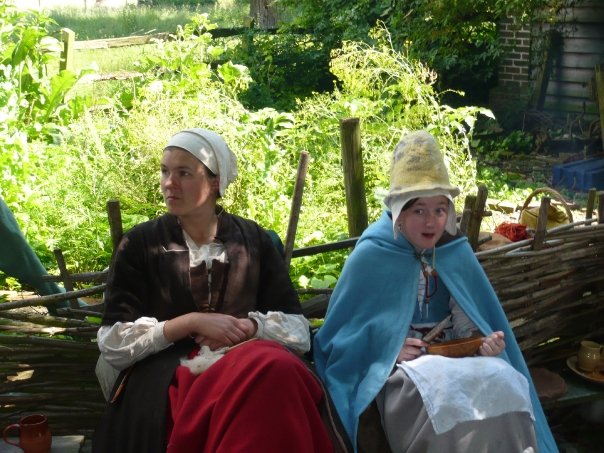
Young Beth sat at Kentwell Dyers – image courtesy of Samantha Hayes 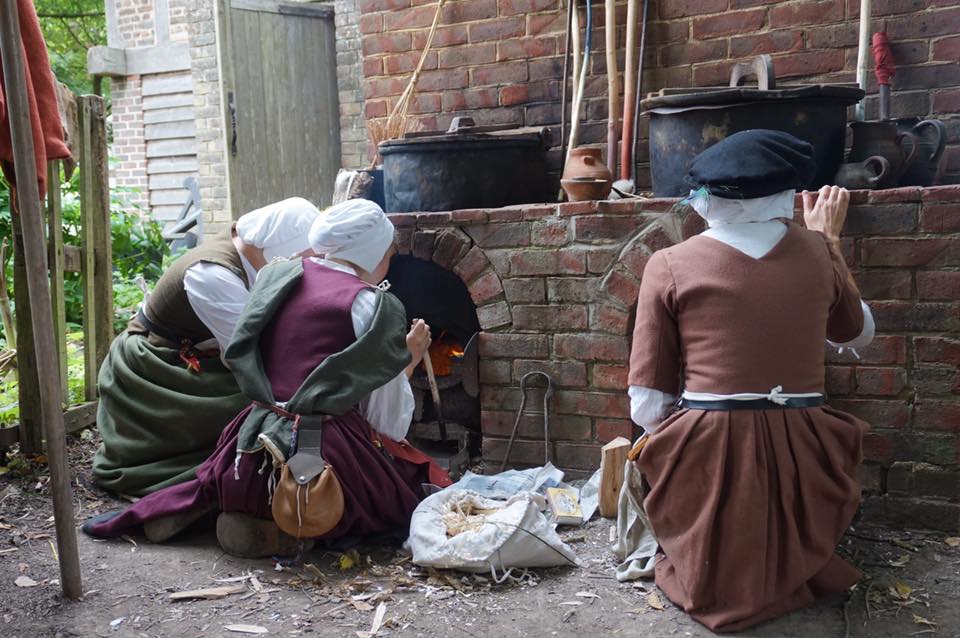
Dyers at Kentwell Dyers – image courtesy of Rachel Barrett
Since re-enactment began at Kentwell some 40 odd years ago it has been a haven of experimental archaeology, and nowhere is this truer than at the Dyers. The washed-out shades of yesteryear have, over time, been succeeded by the production of vibrant colours, and the occasional good strong black, as the collective technique has advanced. Yet the joke remains the same – that no matter how good or how historically accurate our methods become; whatever we dye at Kentwell is ‘dyer’s beige’. It may be orange beige, green beige or even livid yellow beige, but it is always, always beige.

Kentwell naturally dyed yarn rainbow- Image courtesy of Sophie Rosemary Collins
Fast forward to joining the MPhil Textile Conservation programme where I have realised that although I may be a natural dyer, I am not a naturally gifted conservation dyer. Gone was my woodsmoke, fire, tuns filled from the hose by the pig pen, my green vitriol and alum, instead at the CTC I was faced with a water bath (bain-marie), pipettes, thermometers and worst of all a recipe.
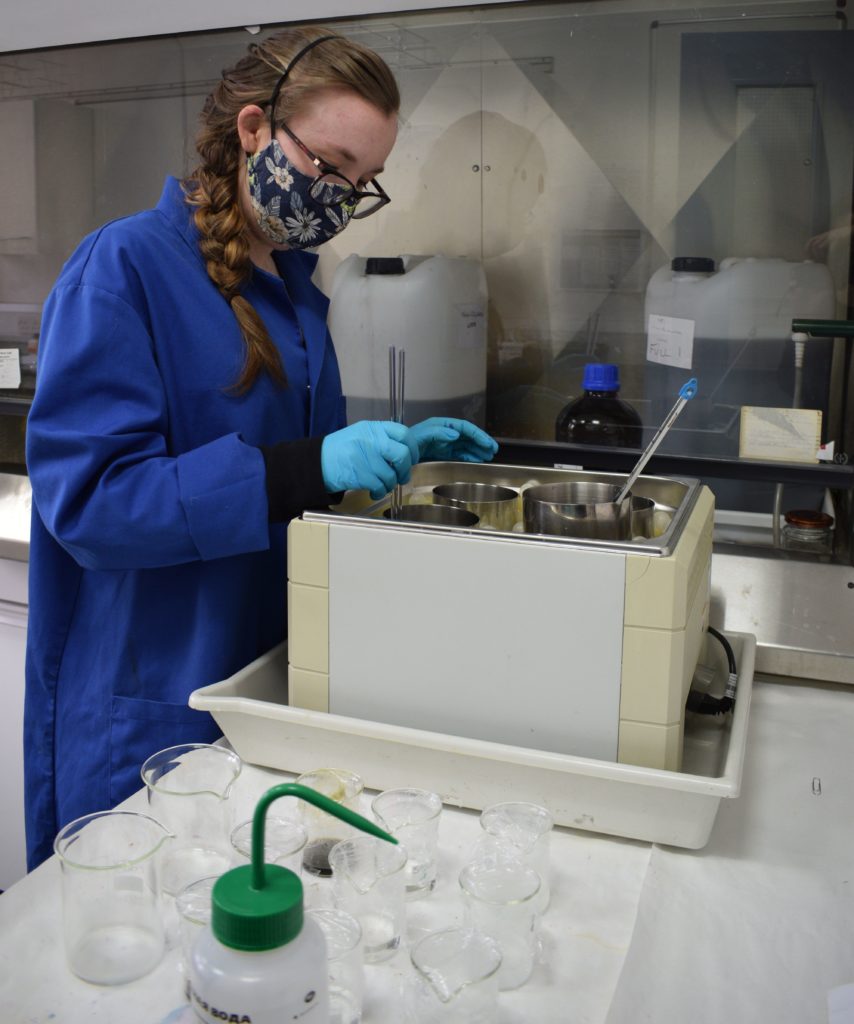
Conservation dyeing at the CTC 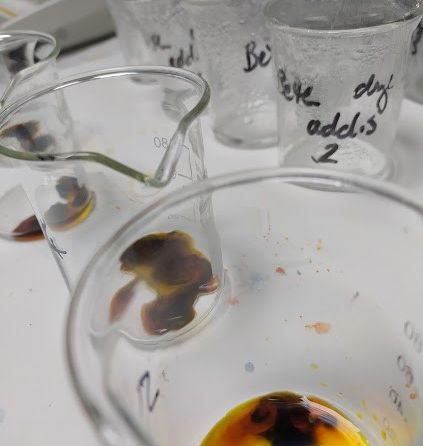
Mixing stock solutions
Conservators spend years accumulating trusted recipes to create just the right shade for fabrics used to provide support for textile objects, Conservation dyeing is much more akin to mixing paints in a palette, so conservators often spend years accumulating trusted recipes to create just the right shade for fabrics used to provide support for textile objects. Conservation dyeing requires a good understanding of colour theory, precision above all things, and often a bit of luck. I think it is fair to say my time at the CTC conservation dyeing has been a steep learning curve, I have made a series of creative mistakes and, cliched as it may seem, have learned an awful lot about myself along the way. Conservators are inherent perfectionists, and in no area more so than in colour matching. In this respect the pursuit of dyeing perfection has led me to deeper understanding of the fundamental importance of precision, hammered home the value of systematic practice, trained me to new levels of focus and patience, and above all else made me appreciate the value of a good recipe.
Like Kentwell, dyeing at the CTC builds upon years of accumulated experience, with generations of students honing their skills, often through grim determination. It seems I myself have come full circle with dyeing. My love of the magic waned as time and again I felt trapped in the dye lab with always another lesson to learn the hard way, yet in time I learned to fall back in love with the process, to be mindful in the moment, to appreciate the magic in the science, and to create that which I had intended: a perfect colour-match which does justice to the beautiful object it will soon support. Finally, I have had my redemptive magic moment, I have achieved perfection and, in suitably fitting fashion, it is oh so beige.
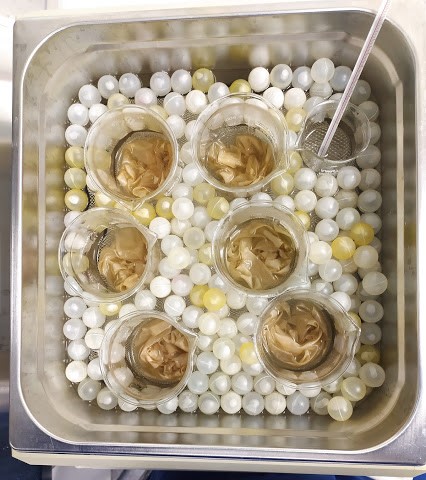
Dyeing beige samples in progress 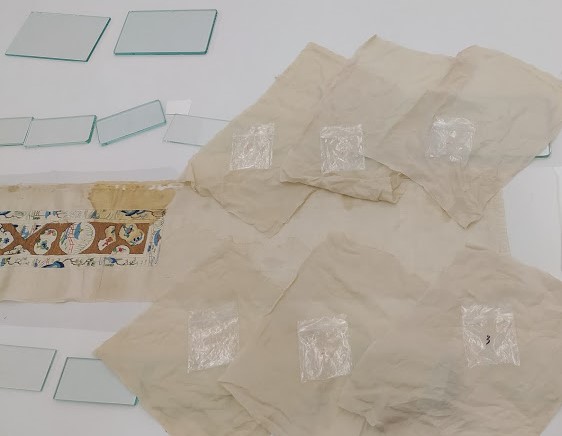
Initial attempts at colour matching beige for stitch supporting the cuff of a 19th C Chinese robe


How wonderful. That is an amazing piece of writing too, I envy you your career ahead. I hope you never fall out of love with textiles and dyeing. I am just starting my dyeing journey, about to plant my own dye garden in a community
Thank you for sharing.
Thank you so much Mo, that is very kind. Good luck with the dyeing!
Beth Gillions